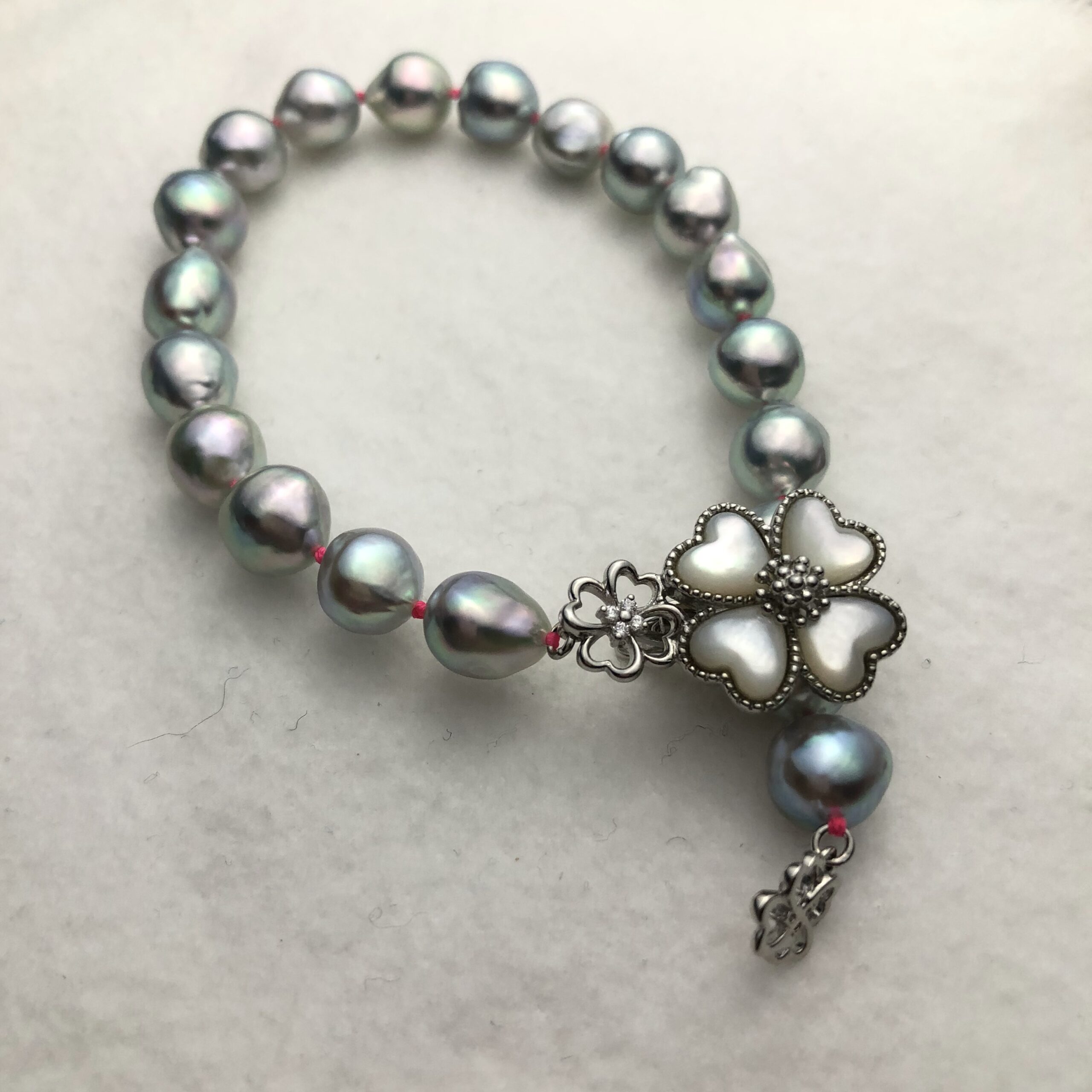

Akoya Bracelet
$285.86
Sold Out
This is a bracelet made with adorable pink thread. Since receiving a request from a customer to make a necklace with pink thread, I seem to have become captivated by pink thread. I am a person with simple thoughts. There are two fast-forward videos of the bracelet’s creation. The reason there are two is that the first attempt ended in failure.
Part 1
Part 2
Now, these pearls were harvested in January 2023. The surface of the pearls is smooth and has a strong luster. What is the difference between pearls with a smooth surface and those without? The pearl layer is secreted by Akoya oysters. In the warm summer, Akoya oysters secrete many layers of pearls. However, while the quantity of secreted pearl layers increases, the surface of the pearls inside the oyster becomes rough. As winter approaches and the seawater temperature decreases, the activity of Akoya oysters weakens. Proportionally, the amount of pearl layers they secrete decreases. Although the quantity of secreted pearl layers decreases, the fine pearl layers accumulate slowly inside the oyster, resulting in a smooth surface on the pearls. Concurrently, the skill of the pearl farm manager is crucial. If Akoya oysters are left undisturbed without stimulation, such as cleaning, for the 40 to 50 days leading up to harvest, the surface of the pearls becomes even smoother. The term “stimulation” here refers to the regular cleaning of Akoya oysters, which is done every two weeks to a month. However, if stimulation, such as cleaning, is applied to Akoya oysters, they can rapidly secrete pearl layers. Intense secretion of pearl layers just before harvest tends to result in a rough surface on the pearls. Adjusting these factors is a showcase of the skill of the pearl farm manager.
In other words, whether to accumulate pearl layers like applying paint or to accumulate them like a mist with a spray, the significant differences arise due to the season, seawater temperature, and the skill of the farm manager. Pearls nurtured by overprotective Akoya oysters tend to have thin pearl layers. Conversely, pearls from oysters subjected to frequent cleaning and stimulation tend to have thick pearl layers. Pearl farmers aim to achieve pearls with both thick layers and a smooth surface through these processes. This process seems to resemble the aspect of raising children, but I cannot say for sure as I do not have children. However, when I hear that pearls from overprotective Akoya oysters have thin pearl layers, it somehow makes me smile. For detailed information about this bracelet’s quality, please watch the videos.
Thank you!!
Excerpt from Etsy